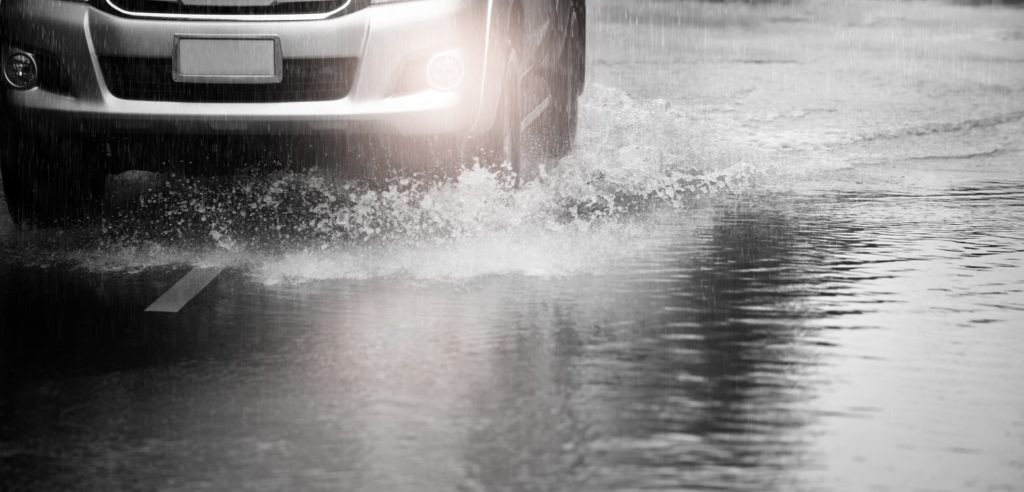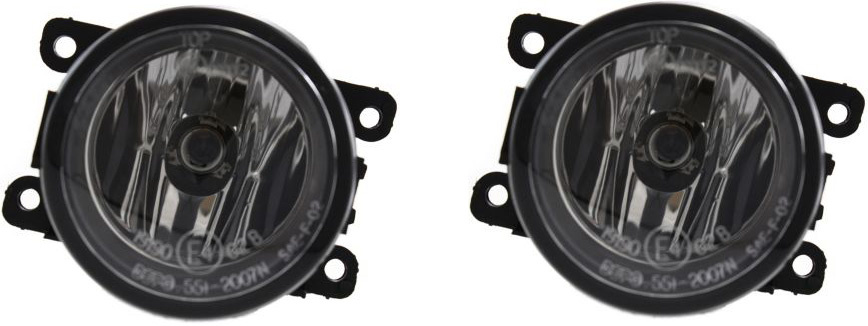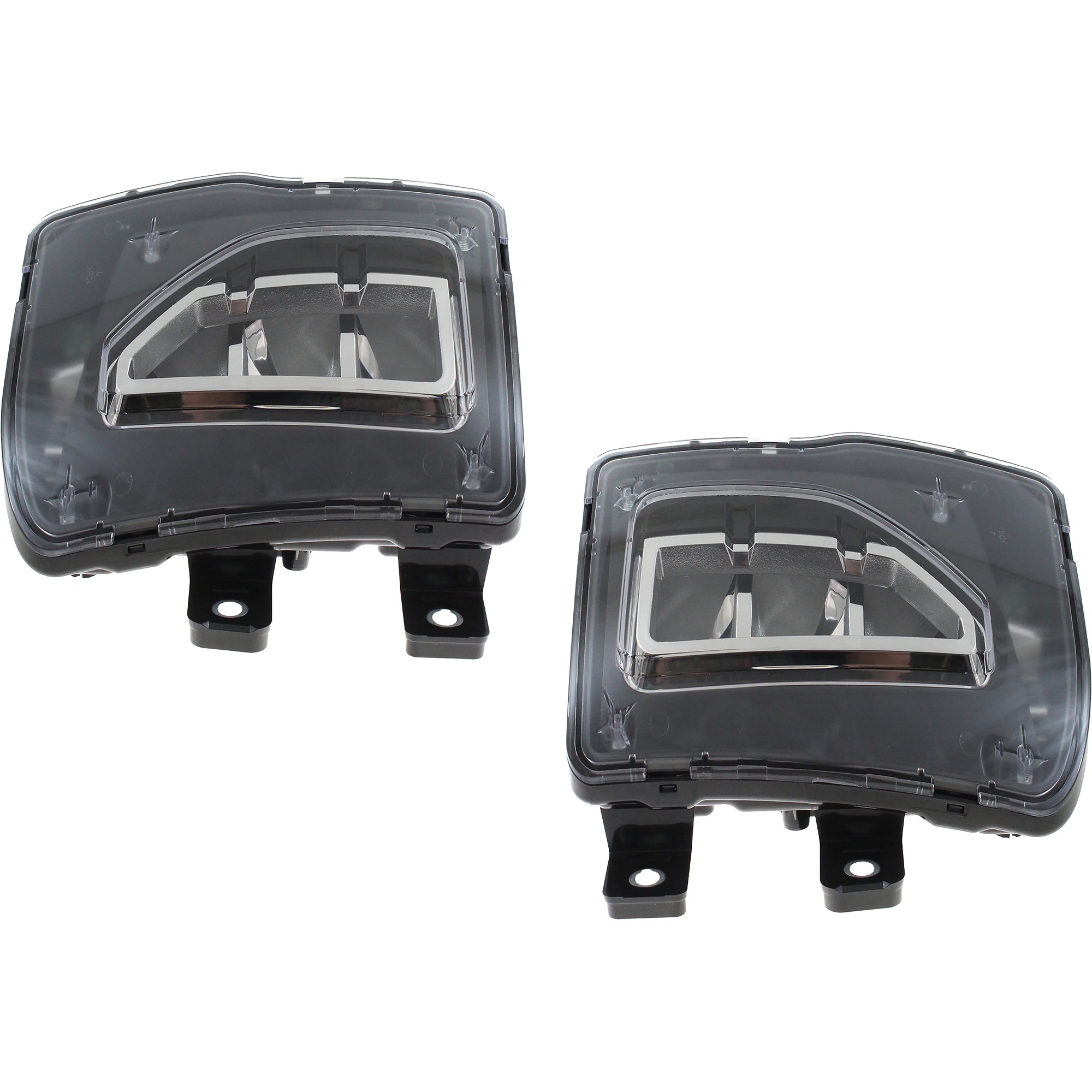Heavy fog, rain, and other weather conditions that reduce your visibility on the road can make driving difficult—if not downright impossible. If your vehicle isn’t equipped with the right lighting equipment, driving in these conditions can lead to hazardous situations, which in turn can result in serious or even fatal accidents.
This is why fog lights are essential additions to your vehicle. These are entirely different from your regular headlights and have a very specific use.

What are Fog Lights?
A front fog light is a type of automotive light that helps the driver see in front of the vehicle. It’s located below the headlight assembly and is designed to emit a wide beam of light that is shaped like a “bar,” with a sharp cutoff at the top to prevent it from reflecting off of the fog.
Fog lamps are usually mounted reasonably low—typically about 12 to 30 inches above the road surface—and angled downward to illuminate the ground below the fog.
Meanwhile, a rear fog light is designed to produce a red-colored light, much like your brake lights, to ensure that other drivers can see your car in low-visibility conditions. It is sometimes placed in the middle of the rear bumper cover or in place of one of the reverse lights.
While not very common in the US, rear fog lights are mandatory in Europe.
Unlike headlights, fog lamps (whether in the front or in the rear) are not mandatory and are considered auxiliary lights. Fog lights don’t usually come standard on base and lower-tier models, so car buyers are sometimes given the option by their dealer to have them as an add-on.
When to Use Fog Lights
Fog lamps are supplementary lights and can be used in conjunction with your headlights in low-visibility settings. However, they are not designed to take the place of your regular driving lights as they have a very short range.
These lights are useful for seeing road markings, but they will not help you see into the fog—so they are really only helpful when driving at relatively low speeds.
While there are no regulations for when you should use your fog lamps, it’s recommended that you only activate them during certain situations, like the ones listed below:
Fog
Fog is formed in the same way that clouds do—it’s pretty much a giant cloud on the ground. Fog lights are especially made for situations where you find yourself having to traverse foggy areas, hence the name. Due to their low placement, the light that they produce is able to hit the ground underneath, rather than going straight into the fog and simply bouncing back like the light from your headlamps.
Heavy Rain
Fog lights can also offer better visibility under heavy rainfall. High and low beams may produce glare when used in heavy rainfall, which is why you need fog lamps to help you see the road in front of you.

Dust Storms
A sand or dust storm can occur in certain states, particularly in Arizona and New Mexico.
While it isn’t recommended that you keep driving when faced with this frightening phenomenon, you will still need to maneuver your vehicle to safety while you wait for the storm to pass.
This is where fog lamps can be helpful, as they can help you navigate the road in front of you as you pull out of the highway or street and onto the shoulder.
Remember that fog lights only illuminate the part of the road directly in front of your car, so as previously mentioned, they may only be used in conjunction with your headlights and never in lieu of them.
Is It Legal to Use Fog Lights When There’s No Fog?
Technically, you can use your fog lights even without the presence of fog if the conditions you’re driving in entail a similar low-visibility setting. This may be the case if you’re driving in very heavy rain, for instance, or through a dust storm.
It’s important to understand that there may be road rules covering the use of fog lights in your state. For example, there’s a law in Florida that disallows the use of fog lights and other auxiliary lights when other cars are on the road—except in foggy conditions.
Meanwhile, in Oregon and a few other states, there is a law that prohibits the use of fog lights when you are within 500 feet of an oncoming vehicle or within 350 feet if you are behind another car. This is to avoid the possibility of blinding other drivers with the glare.
There are also states that regulate the color of your fog lights. For instance, in Washington and Colorado, fog lights must be limited to white or amber—or any color in between, in the case of the latter state.
Always check your state or city laws about fog light usage to avoid any violations and untoward incidents.
When Should You Turn Off Your Fog Lights?
It’s important to turn off your fog lights when the weather is clear and when the roads are already decently lit. This way, you can minimize the risk of potential accidents.
Clear Weather
It’s not recommended to drive with your fog lights on if it isn’t raining, foggy, or snowing. Your fog lights should be reserved for extreme low-visibility driving conditions only. If the weather’s clear, it’s better to only use your headlights to avoid blinding other drivers.
Well-Lit Roads
Fog lights are powerful. If the road is already well-lit, it’s not recommended to make it brighter than it already is. It can be quite dangerous – especially if you beam your lights towards a reflective surface.

How to Turn on Fog Lights
Fog lights have a dedicated switch that allows them to be turned on separately from the headlights and the tail lights. The switch can be a button or a collar on the headlight stalk and typically has a semi-circle symbol with three wavy lines.
Simply twist the collar or push the button to turn your fog lights on. Depending on your car’s make and model, a fog light symbol located on your dashboard may light up once you turn the lights on.
Driving Light vs Fog Light
Driving lights refer to your low-beams and are used to supplement your high-beam headlights. They are designed to provide a longer range and are angled forward to help you see at least 150 to 200 feet into the distance. Unlike fog lights, these come standard in all vehicles.
Fog lights, as previously mentioned, are angled downward and have a very short range. They are supposed to illuminate the ground in front of you. Fog normally starts about two feet off the ground, so the light from your fog lamps should be angled to hit that area—this is necessary to prevent the light from reflecting off of the fog.
Again, these lights are regarded as auxiliary lamps or extra lighting that you may or may not want to purchase, which is why not all cars have fog lights.

Fog Lights: What Now?
Now that you’re familiar with fog lights and their purpose, it’s a good idea to consider getting them if your vehicle doesn’t have them. It can be tricky if you don’t know the right brands or the criteria that make good fog lights good. Fortunately, there are ways to determine if an auto part is of excellent quality, like checking if it’s CAPA-certified.
If you’re looking for a replacement part that’ll withstand the test of time, a CAPA-certified fog light is a wise investment. CAPA, or the Certified Automotive Parts Association, is a non-profit certification organization that establishes standards and specifications for replacement auto parts. Products and manufacturers that are CAPA-certified have undergone rigorous inspection and testing to ensure strict adherence to high-quality standards.
CarParts.com has a wide range of CAPA-certified auto parts – fog lights included. The best part? These parts are available for practically all vehicle models on the market. All our fog lights are sourced from the most reputable names in the industry, so you know you’re getting a reliable part. Shop now for fog lights that fit your needs.
Shop this Project
Replacement – Front, Driver and Passenger Side Fog Lights, With Bulb(s), Halogen
$62.99

Replacement – Front, Driver and Passenger Side Fog Lights, With Bulb(s), Halogen, Standard Type, CAPA CERTIFIED

$68.49
Price and rating may change from the time content is published.Any information provided on this Website is for informational purposes only and is not intended to replace consultation with a professional mechanic. The accuracy and timeliness of the information may change from the time of publication.



































